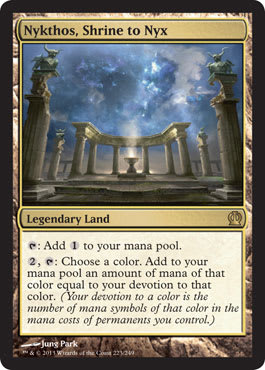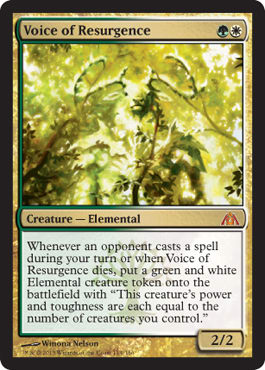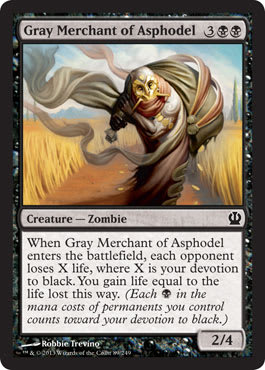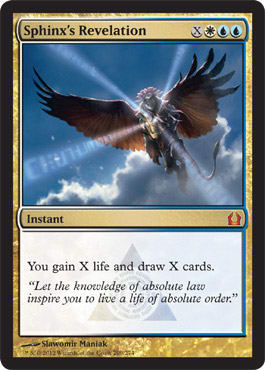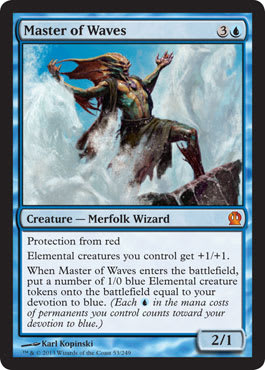Red decks have long been the go-to for new players looking for something to play that isn’t just turning guys sideways. Instead, with red, you have the ever-popular notion of turning guys sideways and burning everything that looks at you cross. While red earns a bad rap for being simple, this often comes from a place of misunderstanding or rage at being unable to consistently stomp it out. Today, we’re going to talk about why current red decks are simply too good to hate out of the metagame.
Red aggro has a stigma that has implied two things about the deck and its players. The first is that only bad players play red or that a red deck simply has smaller decision trees than other decks. The second is that red decks are always a fad that will leave the metagame once “good decks” are discovered.
As far as the former is concerned, I’ve said it before and said it again: There are optimal lines with every deck. The only difference is the difficulty finding that optimal line. Red decks don’t obfuscate the correct line behind a million tiny decisions like storm combo or instant-speed control do. Instead, red decks’ primary decision trees come down to properly sequencing cards and constantly redoing math, both in-game and out when calculating numbers of outs and how they play into your current lines.
Basically, red decks reward playing the deck and playing the opponent very well. Combo decks reward playing the actual deck optimally, and control leans more on playing opponents correctly. Since red is typically playing so many individual underpowered cards, they need to make the most of each draw step. Most importantly, though is that you aren’t playing perfect Magic, so stop worrying about what deck has the highest skill cap attached. If you’re Dave Price or Patrick Sullivan, you can talk about that, but for the ninety-nine percent of you, worry more about playing a simple deck perfectly.
As for red decks being bad choices once the metagame has stabilized, for the past year, we’ve had a mono-red aggro or red-base aggro strategy remain a top-tier deck. At points, the metagame may have knocked red down to tier two, but that’s happened to nearly every single competitive deck since the end of W/U Delver. You can’t hold the past against the current red decks, especially now that Theros and the rotation of so many duals has brought a resurgence in mono-colored strategies.
For the first two weeks, red decks were a solid choice, and then the Pro Tour and Grand Prix Louisville really showed off mono-blue devotion as a good deck. Unfortunately for red, this is among the worst matches around for them. Combined with players having a better bead on dealing with red, it was shoved to the back of the bus. Now that the metagame is shifting back toward sweepers, mono-black, and other assorted devotion, red decks look well-positioned again. The main difference is now they have a foil match, whereas before, none of their matches seemed worse than 40/60.
As for the red decks in the current Standard, here are two sample lists to get an idea of what I’m talking about:
"Mono-Red Devotion by Danny Magda"
- Creatures (26)
- 3 Ember Swallower
- 4 Ash Zealot
- 4 Boros Reckoner
- 4 Burning-Tree Emissary
- 4 Frostburn Weird
- 4 Stormbreath Dragon
- 3 Purphoros, God of the Forge
- Planeswalkers (1)
- 1 Chandra, Pyromaster
- Spells (7)
- 4 Magma Jet
- 1 Mizzium Mortars
- 2 Hammer of Purphoros
- Lands (26)
- 21 Mountain
- 1 Mutavault
- 4 Nykthos, Shrine to Nyx
- Sideboard (15)
- 2 Ratchet Bomb
- 2 Chandra's Phoenix
- 3 Burning Earth
- 1 Hammer of Purphoros
- 1 Chandra, Pyromaster
- 3 Anger of the Gods
- 3 Mizzium Mortars
"Pyro Red by zemanjaski"
- Creatures (24)
- 4 Ash Zealot
- 4 Chandra's Phoenix
- 4 Firedrinker Satyr
- 4 Firefist Striker
- 4 Rakdos Cackler
- 4 Young Pyromancer
- Planeswalkers (2)
- 2 Chandra, Pyromaster
- Spells (12)
- 4 Lightning Strike
- 4 Magma Jet
- 4 Shock
Why list both types of decks? If you play Magic Online, you already know the answer: It’s because a good twenty percent of the online metagame still consists of mostly small-ball mono-red aggro decks. A handful of devoted players, such as zemanjaski, have also been advancing the archetype as well. So, while in real life we largely see a skew toward Big Red and people putting the time into that, small red is still around, and we’re only a slight metagame shift before it’s a strong choice again.
As for Big Red (a.k.a. Devotion Red), ChannelFireball’s newest deck is a swan song to anyone who loved playing slower Big Red decks back in Mirrodin. Their take on red and devotion instead focuses on powering up Nykthos, Shrine to Nyx and using it to snap off early monstrous or simply overload the board with threats. Other than Supreme Verdict, it also bypasses most of the cards that small-ball red decks have problems with. Life-gain is less of an issue when you can consistently power out monstrous Ember Swallowers and Stormbreath Dragons. Most spot removal is less obnoxious due to the combination of card-draw Domri Rade and Chandra, Pyromaster provide. The average midrange deck simply can’t go over the top of Nykthos, Shrine to Nyx powering out giant monsters.
Red decks from recent memory have all had “The Heavy” somewhere in the list—a 4- or 5-drop to help hold the deck together and give it something powerful to do in red’s endgame. It stands out in the aggressive red builds on the edge of the curve, being a virtual mulligan in many hands. Of course, when you do hit the mana for them with the opponent typically being down 10 to 15 life from the initial onslaught, these creatures nearly always won the game. In recent memory, these slots have been highlighted by Hellrider, Thundermaw Hellkite, and now Fanatic of Mogis and Stormbreath Dragon.
It doesn’t necessarily need to be a large haste creature of course; Fanatic of Mogis works well in these builds because of the movement toward clogging up the battlefield instead of destroying every individual creature. Often, midrange decks can successfully stymie a red deck’s offense but does nothing to the creatures, so Fanatic remains a major threat even after stabilizing.
What interests me most is how you can skew the red deck to your own tastes. If you want a better class of threats instead of endless 1/1 and 2/2 bodies, you can run Hammer of Purphoros to help you out. Making 3/3 haste Golems out of Mountains isn’t a bad deal when your worst enemy is flooding out. It also makes your remaining top-decks that much more dangerous thanks to haste.
Hammer can easily fall under a late-game threat, but often, by just playing it on turn three, you’ve significantly shifted how the game will play out against Island decks. Just by having it on the field, any control deck has worse options with planeswalkers, Supreme Verdict, and countermagic. Outside of casting Detention Sphere immediately on Hammer, there’s very little we can do to shift the game back to our favor until Sphinx's Revelation or Elspeth, Sun's Champion come online.
General Matches
G/W
This deck fell off the map, but I’d be surprised if it still didn’t make up 5% of the metagame at larger tournaments. That set of Voice of Resurgence was bought for a reason! Thankfully, your match against these decks isn’t as lopsided as some green players have described it. A lot of your advantage comes from leveraging Chandra's Phoenix, Chandra, Pyromaster, and Fanatic of Mogis. They can’t clear your board out easily, and you can try to grind them out. This plan loses to Unflinching Courage on a big enough creature, but you’re limited with mono-red.
Alternatively, if you have a Young Pyromancer version, this deck is much easier to beat since the 1/1 army complements the burn well and can chump 4/4s all day. Since you want to grind and force damage through, any value you can squeeze out of your burn is well worth it. This is one of those matches in which your hand makes a major impact on how you play the match out.
Cards to focus on: Firefist Striker, Boros Reckoner, Young Pyromancer, Fanatic of Mogis
Black-Based Midrange
Threat analysis and maximizing early damage is everything here. Knowing what opponents’ threats are available at a given time and your outs to them is a key aspect to the match. You rarely are crushed in these matches; it typically comes down to bringing opponents to low enough life totals that you can kill them on the turns they stabilize. Riding a Whip of Erebos–powered Desecration Demon from mono-black or a Blood Baron of Vizkopa in W/B may beat you, but only if your opposition lives through the turn.
Small red actually has a much bigger advantage here since spot removal simply doesn’t impact you nearly as much, and Hammer of Purphoros from either deck can put a major dent in the opponent’s plans. These decks also have more resources to keep Desecration Demon out of the way, and while Gray Merchant of Asphodel hurts, it requires multiples to really put the game out of reach.
As long as you maximize your value out of each card, it’s a pretty straightforward match with either deck. Everything the black deck does is aimed at one-for-one trades, and the only times you need to kill creatures is to lower the devotion to make Gray Merchant less of a threat. These black decks also lack any real answers to Chandra's Phoenix as repeatable damage, so, if possible, hold burn until you can run rebuys or outright kill the opponent.
Cards to focus on: Purphoros, God of the Forge, Hammer of Purphoros, Chandra's Phoenix, Mutavault
W/U and Esper
Good news is you smash Esper barring some bad luck or slow draws with either iteration of the deck. All the opponent can do is attempt to trade, but the mana base makes hitting plays with every land drop a difficult proposition. These decks also have fewer ways to regain life than W/U, and while Thoughtseize is at least respectable against the Big Red builds, small red eats Esper alive, and there’s no easy solution for it. Sure, you could board in a bunch of Blood Baron of Vizkopa and hope for the best, but if Esper and MBC come back big, I would be shocked if small red didn’t carve out a niche.
W/U is one of the hardest matches if the opponent comes equipped to fight aggro, but on the draw, he or she will still fall prey to needing correct sequencing to be in the game. Sphinx's Revelation and Elspeth, Sun's Champion both go a long way in this match, but reaching the late game is the real challenge. Bigger devotion decks actually have a harder time since they can’t play around countermagic, and Supreme Verdict on the draw doesn’t cost you an extra 4 to 8 life.
Cards to focus on:
W/U: Stormbreath Dragon, Purphoros, God of the Forge, Hammer of Purphoros, Chandra's Phoenix, Mutavault
Esper: Hammer of Purphoros, Chandra's Phoenix, Mutavault, Chandra, Pyromaster, Burning Earth
Mono-Blue Devotion
Welcome to the worst match in the format for small red and one of the tougher ones for Devotion Red. Why is it so bad? There are a lot of cheap roadblocks, thanks to Frostburn Weird, Nightveil Specter, and Tidebinder Mage alongside Master of Waves as a finisher. At worst, Master of Waves is a better Huntmaster of the Fells, and at best, the card creates an entire army and can’t be taken out by a red deck.
Spot removal isn’t really good against this deck since it swarms the board as its direct game plan. If you’re on the play, you can sometimes position yourself to clear blockers out for a turn or two, but the high toughness on a number of the opponent’s cards catches up to you real fast. With Devotion Red, your best play is putting Stormbreath Dragon down ASAP and trying to race. Thankfully, the opponent only has a handful of ways to interact with large flyers, and half of those can be burnt to a crisp.
Moving forward, the best plan is going to be focusing on flyers and maybe bringing Mizzium Mortars back to the main decks of both builds. In Devotion Red, this can be critical since it has a much higher chance of actually overloading it, solving the Master of Waves issue and helping to keep Thassa, God of the Sea in check. Unfortunately, there’s simply no easy fix—the deck just matches up well on every level against the red decks.
Cards to focus on: Stormbreath Dragon, Chandra's Phoenix, Firefist Striker, Mizzium Mortars
Mono-red’s place in the metagame will ebb and flow as decks adjust. Right now isn’t the best time for many variations simply due to the amount of mono-blue floating around. If that number starts to drop off, though, red decks pair up quite well against the various black strategies and control decks of the format. It’s a deck you should always keep in mind as a potential contender and keep a lookout for new variants of it popping up.
Josh Silvestri














